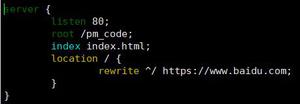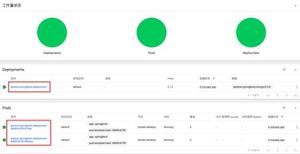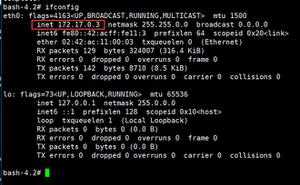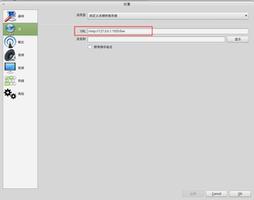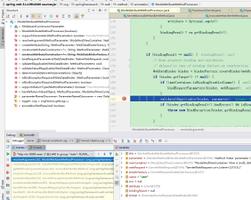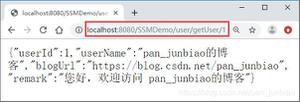@ModelAttribute批注,何时使用?
假设我们有一个实体Person,一个控制器PersonController和一个edit.jsp页面(创建一个新的或编辑一个现有的人)
控制者
@RequestMapping(value = "/edit", method = RequestMethod.POST)public String editPerson(@RequestParam("fname") String fname, Model model) {
if(fname == null || fname.length() == 0){
model.addAttribute("personToEditOrCreate", new Person());
}
else{
Person p = personService.getPersonByFirstName(fname);
model.addAttribute("personToEditOrCreate", p);
}
return "persons/edit";
}
@RequestMapping(value = "/save", method = RequestMethod.POST)
public String savePerson(Person person, BindingResult result) {
personService.savePerson(person);
return "redirect:/home";
}
edit.jsp
<form:form method="post" modelAttribute="personToEditOrCreate" action="save"> <form:hidden path="id"/>
<table>
<tr>
<td><form:label path="firstName">First Name</form:label></td>
<td><form:input path="firstName" /></td>
</tr>
<tr>
<td><form:label path="lastName">Last Name</form:label></td>
<td><form:input path="lastName" /></td>
</tr>
<tr>
<td><form:label path="money">Money</form:label></td>
<td><form:input path="money" /></td>
</tr>
<tr>
<td colspan="2">
<input type="submit" value="Add/Edit Person"/>
</td>
</tr>
</table>
</form:form>
我正在尝试上面的代码(没有在savePerson方法中使用@ModelAttribute批注,并且它可以正常工作。为什么以及何时需要将批注添加到person对象:
@RequestMapping(value = "/save", method = RequestMethod.POST)public String savePerson(@ModelAttribute("personToEditOrCreate") Person person, BindingResult result) {
personService.savePerson(person);
return "redirect:/home";
}
回答:
您不需要仅使用Bean作为参数的@ModelAttribute( )
例如,这些处理程序方法可以很好地处理以下请求:
@RequestMapping("/a")void pathA(SomeBean someBean) {
assertEquals("neil", someBean.getName());
}
GET /a?name=neil
@RequestMapping(value="/a", method=RequestMethod.POST)
void pathAPost(SomeBean someBean) {
assertEquals("neil", someBean.getName());
}
POST /a
name=neil
使用@ModelAttribute( )将每个请求的
加载到模型中,例如从数据库中加载,尤其是使用时@SessionAttributes。这可以在Controller或中完成ControllerAdvice:
@Controller@RequestMapping("/foos")
public class FooController {
@ModelAttribute("foo")
String getFoo() {
return "bar"; // set modelMap["foo"] = "bar" on every request
}
}
由FooController以下任何转发到的JSP :
${foo} //=bar要么
@ControllerAdvicepublic class MyGlobalData {
@ModelAttribute("foo")
String getFoo() {
return "bar"; // set modelMap["foo"] = "bar" on every request
}
}
任何JSP:
${foo} //=bar如果要使用( ):@ModelAttribute
* __
@ModelAttribute("attrib1")SomeBean getSomeBean() {
return new SomeBean("neil"); // set modelMap["attrib1"] = SomeBean("neil") on every request
}
@RequestMapping("/a")
void pathA(@ModelAttribute("attrib1") SomeBean someBean) {
assertEquals("neil", someBean.getName());
}
GET /a
使用@ModelAttribute( )获取存储在 的对象:
@RequestMapping("/a")String pathA(RedirectAttributes redirectAttributes) {
redirectAttributes.addFlashAttribute("attrib1", new SomeBean("from flash"));
return "redirect:/b";
}
@RequestMapping("/b")
void pathB(@ModelAttribute("attrib1") SomeBean someBean) {
assertEquals("from flash", someBean.getName());
}
GET /a
使用@ModelAttribute( )获取存储的对象@SessionAttributes
@Controller@SessionAttributes("attrib1")
public class Controller1 {
@RequestMapping("/a")
void pathA(Model model) {
model.addAttribute("attrib1", new SomeBean("neil")); //this ends up in session due to @SessionAttributes on controller
}
@RequestMapping("/b")
void pathB(@ModelAttribute("attrib1") SomeBean someBean) {
assertEquals("neil", someBean.getName());
}
}
GET /a
GET /b
以上是 @ModelAttribute批注,何时使用? 的全部内容, 来源链接: utcz.com/qa/401231.html

